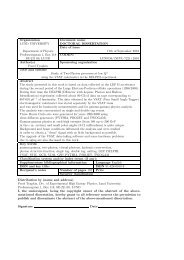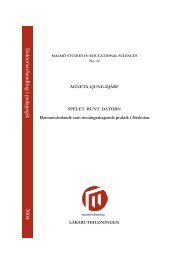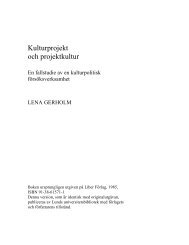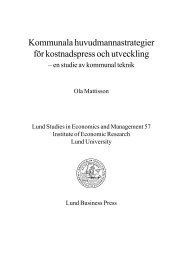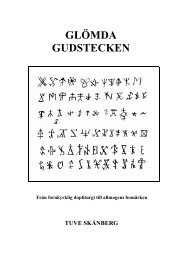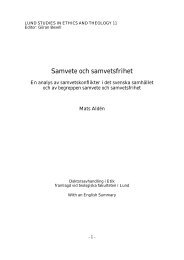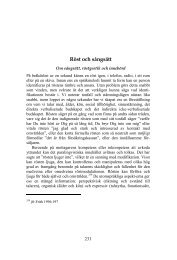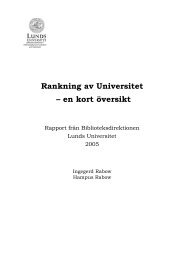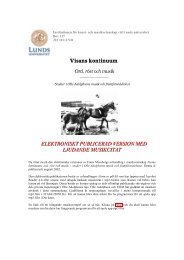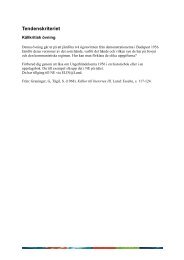Hyperpolarized Nuclei for NMR Imaging and Spectroscopy - Lunds ...
Hyperpolarized Nuclei for NMR Imaging and Spectroscopy - Lunds ...
Hyperpolarized Nuclei for NMR Imaging and Spectroscopy - Lunds ...
Create successful ePaper yourself
Turn your PDF publications into a flip-book with our unique Google optimized e-Paper software.
3.2 Mechanical ventilator <strong>for</strong> hyperpolarized gas<br />
The experiments involving administration of hyperpolarized gas to the subjects<br />
(Papers III–V) used a custom-built mechanical ventilator (Amersham<br />
Health R&D). Another small animal ventilator <strong>for</strong> hyperpolarized gas has<br />
been described by Hedlund et al. 2000. Besides being MR compatible (no<br />
ferromagnetic parts inside or close to the imaging magnet), the ventilator has<br />
to be compatible with the hyperpolarized gas. The latter requirement dictates<br />
that the gas must not encounter any metallic parts, which may cause<br />
depolarization, nor may the gas be contaminated with oxygen from the air,<br />
which would also lead to rapid loss of polarization. A valve system, consisting<br />
of pneumatically operated membranes, was there<strong>for</strong>e constructed to<br />
control the delivery <strong>and</strong> outlet of both air <strong>and</strong> hyperpolarized gas to <strong>and</strong><br />
from the animal (see Figure 6).<br />
A<br />
B<br />
C<br />
26<br />
P<br />
N 2 or argon<br />
HP gas<br />
Air<br />
HP gas<br />
or air<br />
P<br />
F<br />
P<br />
P<br />
P<br />
D 1 2 4 5<br />
Air Air<br />
HP gas<br />
3<br />
1: Inspiration duration<br />
2: Expiration duration<br />
3: Breathing frequency<br />
4: Trigger delay<br />
5: Breathhold duration<br />
Pneumatic valves:<br />
Closed Open<br />
P<br />
F<br />
time<br />
Trigger signal to<br />
MR-scanner<br />
Pressure transducer<br />
Flow meter<br />
Figure 6. Function of the hyperpolarized gas ventilator during A) inspiration of<br />
3 He/ 129 Xe, B) inspiration of air, <strong>and</strong> C) expiration. The parameters denoted<br />
1…5 were under computer control (D). (Courtesy of B. Fridlund, Amersham<br />
Health R&D.)<br />
The hyperpolarized gas was expelled from the flexible Tedlar bag by<br />
placing the bag inside a rigid cylinder, pressurized with nitrogen or argon.<br />
During the experiments, the bag was placed as far as possible (about 1.5 m)<br />
from the MRI magnet, to reduce T 1 relaxation of the gas due to the gradients<br />
of the stray magnetic field (see section 2.4.1). The mixing of hyperpo-



